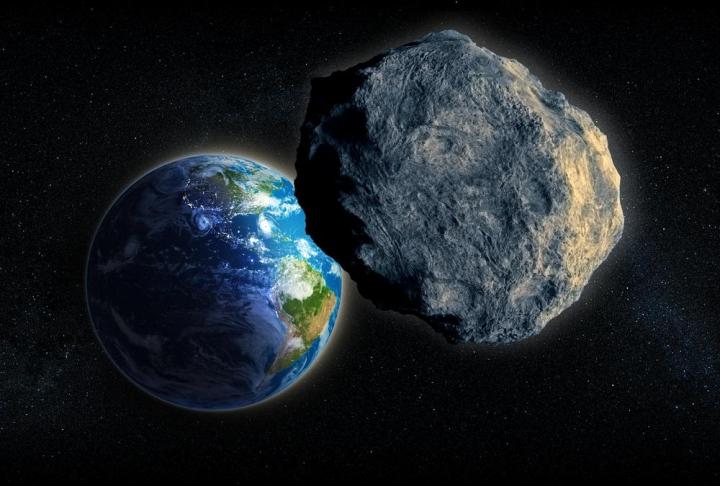
Astronomers predict the 300- to 600-meter wide asteroid will pass by the Earth at 17:18 UT (1:18 PM ET). It will be approximately 1.3 lunar distances (about 300,000 miles away) away from the planet’s surface and will be traveling at an extremely high velocity of 35 km/s (78,000MPH). It is far enough away that it doesn’t pose a threat to the Earth, which is a good thing as it would cause a significant problem if it were to crash land on our planet.
In 2013, a 20-meter wide meteorite traveling at a speed of 19 km/s caused local damage when it exploded high above Russia with the force of around 500 kilotonnes of TNT. Over 1,200 people were injured when the concussive shock waves from the explosion shattered windows and damaged buildings.
Light from the explosion even burned the skin and eyes of stunned onlookers up to 20 miles away from the incident. We don’t need to tell you what an asteroid 20 times larger and almost twice as fast would do if it actually hit the Earth.
Astronomers are excited by the unpredicted discovery of 2015 TB145, as it is the closest flyby of a celestial object since 2006 when the object 2004 XP14 came within 1.1 lunar distances. Scientists will use this opportunity to study the physical properties of the 2015 TB145, which is believed to be cometary in nature. Amateur astronomers in the Northern hemisphere may also get a chance to see the asteroid when it travels through the constellation of Orion during the overnight hours of October 30th and into the early morning hours of October 31st.
The arrival of 2015 TB145 also provides astronomers with a chance to use their imaging and radar-tracking equipment before the next near-earth object makes its appearance. Both DSN Goldstone in California and the Arecibo array in Puerto Rico will be tracking and recording the path of 2015 TB145. The data collected from this unexpected visit could help astronomers prepare for future near-earth encounters. Unless we have another surprise visitor, we won’t see another similar near flyby until 2027, when 1999 AN10 is expected to pass the Earth within 1 lunar distance.
Editors' Recommendations
- Watch NASA’s capsule with asteroid samples hurtling to Earth
- NASA to roleplay what would happen if an asteroid struck Earth
- NASA teams with European counterparts to stop asteroids from hitting Earth




